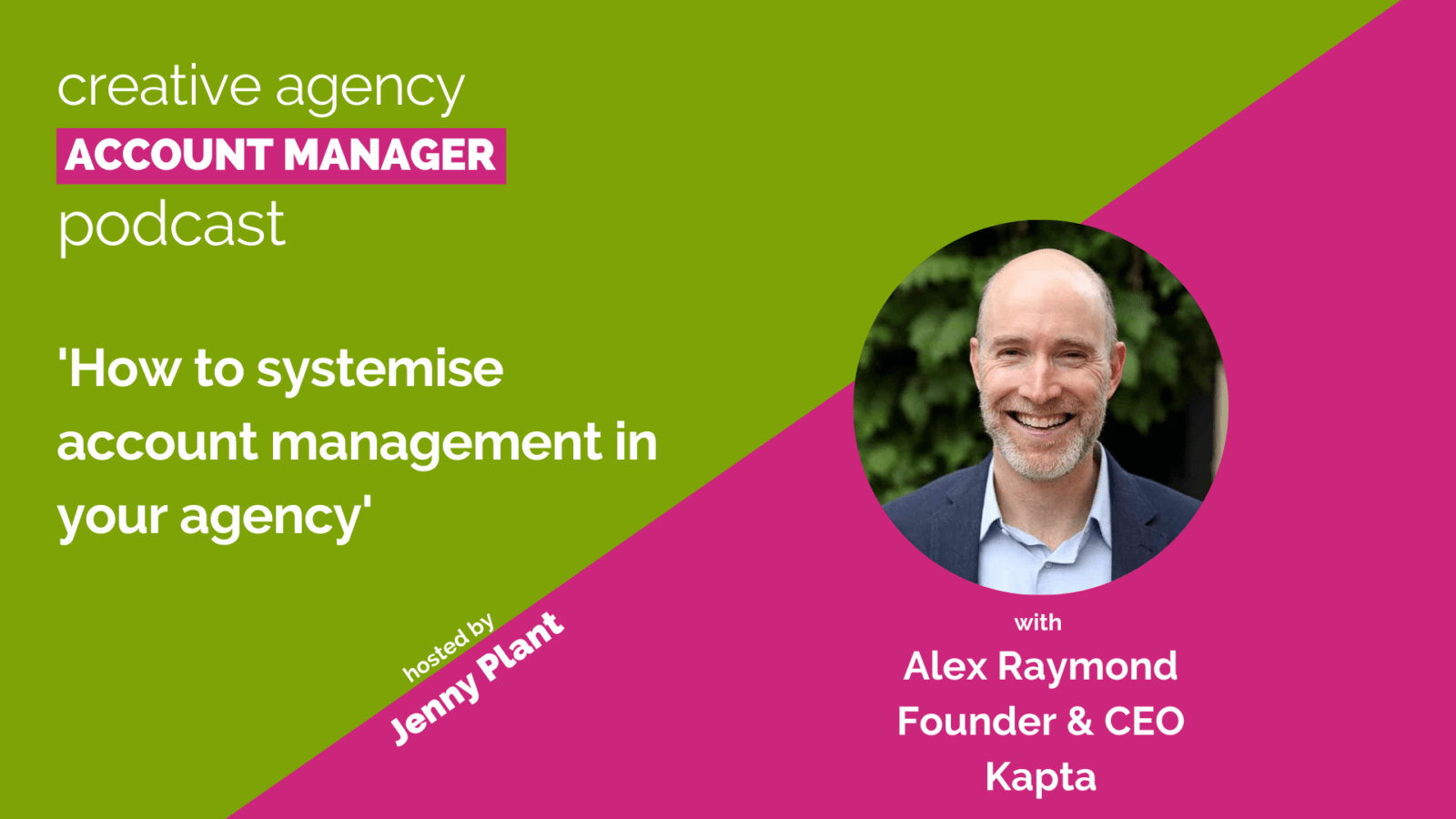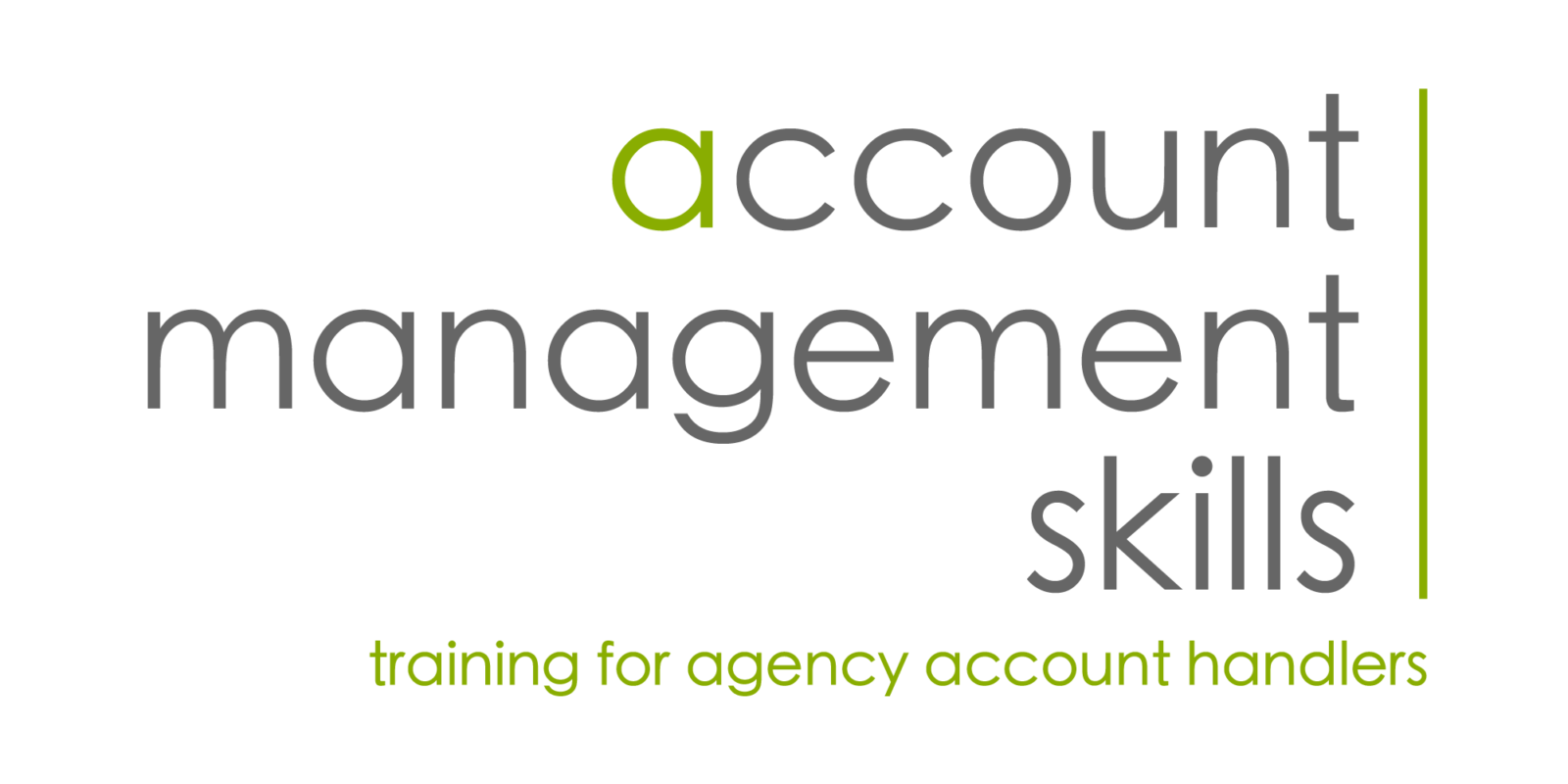
Welcome to Episode 44. In this episode, I talk to Alex Raymond from Kapta about everything to do with account management processes. Not project management systems, not CRM systems, but having a dedicated system to guide the agency account management team, when it comes to managing and delve developing existing client relationships. Kapta is a key account management platform.
We chatted about:
– the importance of having a client development plan
– the value of running quarterly business reviews
– how to avoid client churn
– and also how account management’s going to evolve over the next three to five years.
I hope you enjoy my chat with Alex and you can check out the details for KAMCon on the website which is https://kapta.com/kamcon
A reminder also that my next Account Accelerator programme starts on 23rd of September. This is a transformational programme for agency account managers and account directors to take your agency from unpredictable project revenue to more predictable account growth. It’s a playbook for growing existing business, a step by step process and a toolbox of strategies that you can take back to your agency and apply.
On my Training page you’ll also find testimonials from account directors and account managers who’ve been through the programme.
Transcript:
This simply comes down to the CEO, Managing Director, executive team. How well do they understand the power of true customer engagement? How well do they understand the growth, the profitability, the expansion opportunities that exist by doing a really good job of being customer centric, and for the people who don’t get it, then everything is a secondary thought. Account managers are sort of smushed in with all the other roles, and you’ve got to do three or four things, and, therefore, you’re not really effective at any of them. It’s hard to multitask as, as an account manager it’s hard to do multiple things. So if at the senior level that people who own and run the agency, understand that my path of success goes straight through existing customer relationships and the potential to make them as significant as possible, then they’ll understand and they’ll have resource appropriately, which which would mean separating out the roles of PM versus AM or CSM or KAM, whatever you call it inside your business, really making a very clear distinction there. And also the distinction between new business acquisition, so totally net new, and expansion and retention of existing. And once you get up to, it’s not a very high threshold, once you once you’re at maybe 5 million or even less in revenue, you want to start making those changes. So you want to have someone who protects and defends the existing customers and grows them, you want to have someone chasing the business.
if you want to elevate your game if you want to talk and be confident in front of those people, one of the most powerful tools by far that if your audience isn’t doing this Jenny, then I really want them to start doing it is conducting voice of customer interviews. Okay, so voice of customer interview. First, this is not a CSAT, or NPS discussion. That’s not what I’m talking. Voice of customer interview is, let’s say we had that mythical opportunity got 20 minutes with the CMO, what do we do? What do we talk about? So we’re really thoughtful in our approach to a VOC, voice of customer interview. And we want to walk that mythical mile in their shoes, so to speak. And so to do this, we just really put ourselves in, what’s their perspective? How do we learn from them the best? And you ask some really thoughtful questions.
So it takes some guts to ask this question. But once you warm up, and you’ve done this a few times, you can start to ask it, you ask the future close question. And that question is basically, so Jenny, if we were to project out two or three years from now, and I was coming back to you with a renewal order, how would you decide whether to stick with us as a partner or not. And so what you’re doing is you’re asking about their mindset, their goalposts, their milestones, and really how they make decisions. And they might tell you immediately, well, as long as you know, x, y, and z happens, then you’re good. Or they may say, I don’t know let me think about it. Whatever it is, you start to get insights into how decisions get made, so that you can bring the resources, you can bring your whole intelligence to that experience, and how you can improve with the customer. So those are just some examples of voice of customer, but I’m telling you, as an account manager, you just pick up the habit of doing these, and you do them, you just make it kind of loose and casual. So you’re just having a conversation, you’re not showing up with a survey, you’re not writing stuff down, you’re not scoring them, you’re just remembering to ask those handful of questions, you’ll really see that relationships sort of escalate.
The other thing that people do, who are really good, the black belts at QBR is what they do, Jenny, is they’ll actually co-opt someone from the customer side, to co present and co own the meeting. So I’m not just showing up and presenting to the CMO, I’ve got the director of digital advertising, whoever the person is and we’re co presenting, we prepare the agenda, we prepared the deck, we prepared everything together, we’re getting the right people in the room. And then that’s about a partnership. And so that’s a very effective thing. So don’t make the mistake when you’re doing your QBR. When your boss says, hey, did you do your QBRs this quarter, don’t make the mistake of ‘I’ve got to set these up and I’ve got to talk for an hour. It’s just me doing them. And I have to just talk, talk, talk, talk.’ No, think about the format. Think about getting other people involved. Think about asking questions. Some of this does take some maturity and competence to do it properly. But you know, you do it once or twice, you’ll get the hang of it, it’s not that big of a deal. And your EBRs and QBRs will be much more effective as a result.
